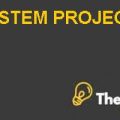CASE ANALYSIS: MANAGING CREATIVITY AT SHANGHAI TANG Case Solution
Case Analysis: Managing Creativity at Shanghai Tang
Introduction
The company was founded by David Tang as his brainchild in September 1994.The company first started its business at a pioneer location which is known as a Pedder Street central Hong Kong. The company is known as the fashion leader in China having its business spread over the world. Moreover, the company first started its business by launching 24 outlets all over the world. Later on the company’s controlling stake was taken over by Richemont. The company is the fashion leader in Hong Kong and manufactures fashion accessories including fashion jackets, silver chopsticks, silk pajamas and leather goods. The company also offers customized tailoring or made to order goods as well.
In 1997 the British government handed over the control of Hong Kong to the People’s Republic of China and the world was thinking that Hong Kong will be changed in a few years and because of that the world wanted to see it before the change. In 1997, Hong Kong was flooded by visitors, tourists and business personnel. At that time, business minded people saw a business opportunity as many tourists wanted to take any symbol of the Chinese culture with them. However, the industry for fashion and these accessories started to be populated by many rivals but shanghai tang started to focus on high quality products and accessories and that was the only reason that the company is still dominating in the industry.
Tang entered in an agreement with Richemont Group, which was a Switzerland based luxury goods company, however the company still faced a tough competition among the industry rivals and the rivals were strong enough to compete with Tang as the rivals also had a good brand image and they were Cartier, Alfred Dunhill, Piaget etc.
The company struggled a lot to compete with the rivals and to make a good image among the industry members.The reason behind the company’s success was the innovation and creativity which allowed it to survive among the large players and to stay profitable.Moreover, the company still focused on creativity and that is why the company is still known as the luxury brand in the industry.
As we discussed earlier the company manufactures many products and there are several categories and the main category which generates almost 50% of its revenue is known as the core collection, this category includes silk sweater, Fashion Jackets, Hard goods, home furnishing and gift products. This category is crucial for the company since; a major portion of revenue comes from this category or business unit.
Problem Statement
The company was working well and making profit, also the company had high brand recognition and brand equity. Moreover, the sales of the company were high enough to meet the profitability criteria of the industry however, the company’s chairman was anxious about the news that the creative director Joanne Ooi was leaving the company in order to join Biochemical company, she worked 7 years for Tang and she had a strong recognition among the fashion industry as she was well known to the Chinese and rest of the Asian market as well as she had experience over 10 years in the industry. The job she was doing at Tang was to manage and create fashion and to align it with the creativity. The other problem was that the sales of the new collection that the company was launching was refused by many retailers to purchase since they believed that these designs would not be able to sold quickly and they will burden the inventory of the retailers as well......................
This is just a sample partial case solution. Please place the order on the website to order your own originally done case solution.











